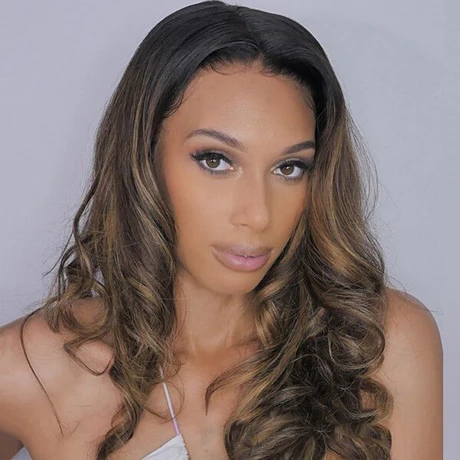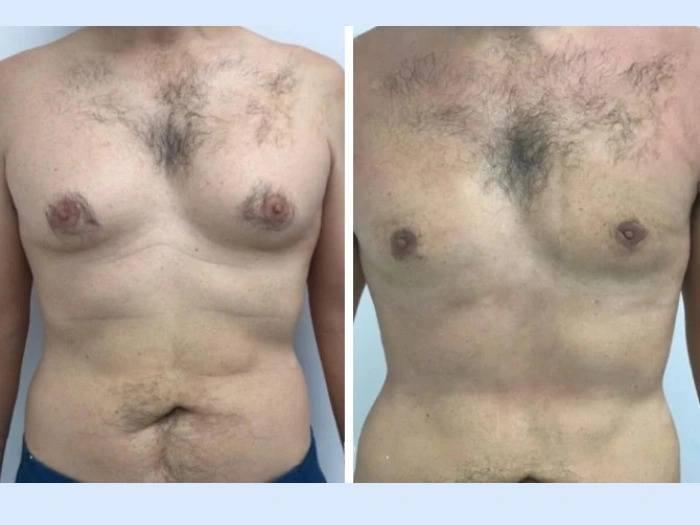A step-by-step guide for human hair wigs covering daily care, cleaning, styling, storage, and common pitfalls

1. Daily Wearing & Gentle Handling
- Putting on/taking off: Always hold the wig by its cap edges (not the hair strands) when positioning it on your head or removing it. If using wig clips or combs (built into the cap), fasten/unfasten them gently to avoid pulling the cap or hair.
- Avoid excessive touching: Refrain from constantly running your fingers through the wig, as natural oils from your hands can transfer to the hair and weigh it down over time.
- Minimize friction: When sitting, avoid resting the wig against rough fabrics (e.g., woolen scarves, coarse sweaters) that can cause tangles. If the wig shifts, adjust it by the cap, not the hair.
2. Regular Brushing & Detangling
- Tools to use:
- A wide-tooth comb (for wet hair or heavy tangles) to avoid pulling strands.
- A soft-bristle wig brush (or boar-bristle brush) for dry hair—its gentle bristles smooth the hair without causing static or breakage.
- Avoid plastic brushes (they create static) or fine-tooth combs (they can snag and break hair).
- Brushing technique:
- Start from the ends of the hair (not the roots) and work upward slowly—this prevents tangles from “traveling” up the strand and causing breakage.
- For long wigs, section the hair into 2–3 parts (e.g., top, middle, bottom) to brush more thoroughly without overwhelming the wig.
- If you encounter a tight knot, hold the hair above the knot (to reduce tension on the cap) and gently tease it apart with a wide-tooth comb—never yank.
3. Washing: Frequency & Step-by-Step Process
- How often to wash:
- If worn daily: Every 7–10 days.
- If worn occasionally (1–2 times/week): Every 2–3 weeks.
- If exposed to heavy humidity, sweat, or styling products: Wash sooner (these can build up and make hair dull).
- Supplies needed:
- Sulfate-free, paraben-free shampoo (sulfates dry out human hair and damage the wig cap).
- Hydrating conditioner (avoid heavy, oil-based formulas that weigh hair down).
- A clean, soft towel (microfiber towels are ideal—they reduce friction).
- A wig stand or mannequin head (to air-dry the wig in shape).
- Washing steps:
- Pre-brush: Gently detangle the wig with a wide-tooth comb before washing—wet hair is more fragile, and tangles will worsen if not removed first.
- Prepare water: Fill a basin or sink with lukewarm water (30–40°C/86–104°F)—hot water damages the hair cuticle and fades color, while cold water won’t lather shampoo properly.
- Shampoo gently: Add a small amount of shampoo (1–2 teaspoons) to the water and swish to mix. Submerge the wig cap-side down (so the hair hangs freely) and gently squeeze the cap and hair—do NOT rub, twist, or scrub (this causes tangling and cap damage). Let it soak for 3–5 minutes.
- Rinse thoroughly: Rinse the wig under lukewarm running water (again, cap-side down) until all shampoo is removed—residue causes dullness and itchiness.
- Condition (optional but recommended): Apply a small amount of conditioner to the mid-lengths and ends (avoid the cap and roots—conditioner can loosen the knots that hold hair to the cap). Let it sit for 2–3 minutes, then rinse thoroughly with lukewarm water.
- Dry gently: Pat the wig with a soft towel to remove excess water—do NOT wring or twist (this stretches the hair and cap). Avoid rubbing the hair against the towel (use blotting motions instead).
4. Drying: Air-Dry is Best
- Shape while drying: Place the damp wig on a wig stand or mannequin head (adjust the size to match your head circumference so the cap doesn’t stretch). Gently arrange the hair (e.g., smooth the top, shape the ends) to help it dry in its natural style.
- Avoid direct heat/sunlight: Do not dry the wig near heaters, hair dryers, or in direct sunlight—heat causes the hair to become brittle, and sunlight fades color.
- Speed up (if needed): If you’re in a hurry, use a hair dryer on the cool setting and hold it 30–40cm (12–16 inches) away from the hair. Keep the dryer moving to avoid concentrating heat on one area.
5. Styling: Safe Practices for Heat & Products
- Heat protection first: Always apply a heat protectant spray (designed for human hair) to the wig before using hot tools—this creates a barrier against heat damage.
- Control the temperature: Set heat tools to 180–200°C (350–390°F) maximum. Higher temperatures (e.g., above 230°C/450°F) will burn or melt the hair cuticle, leading to permanent damage.
- Avoid frequent heat styling: Limit heat use to 1–2 times per week. For daily styling, use heat-free methods (e.g., foam rollers for curls, hair oil for smoothness).
- Choose gentle products: Use lightweight, water-based styling products (e.g., mousse, hairspray) instead of oil-based ones (e.g., pomades, heavy serums)—oil builds up quickly and is hard to wash out, making the wig look greasy.
6. Storage: Keep It Shape & Dust-Free
- Short-term storage (1–2 days): Place the wig on a wig stand or mannequin head to maintain its shape. Cover it with a breathable wig cap or a clean, loose cloth to keep out dust.
- Long-term storage (weeks/months):
- Wash and fully dry the wig first (storing damp hair causes mold or mildew).
- Brush it gently to remove tangles.
- Place it in a breathable storage bag (e.g., a cotton pillowcase or a specialized wig storage bag)—avoid plastic bags (they trap moisture).
- Store the bag in a cool, dry place (e.g., a closet shelf)—avoid humid areas (like bathrooms) or direct sunlight.
7. Common Mistakes to Avoid
- Using regular hair products: Shampoos, conditioners, or styling products with sulfates, alcohol, or harsh chemicals will dry out the wig and shorten its lifespan. Always choose products labeled “safe for human hair wigs.”
- Sleeping in the wig: Friction from pillows and movement during sleep causes severe tangling, breakage, and cap damage. Remove the wig before bed.
- Coloring or bleaching at home: Human hair wigs can be dyed, but this requires expertise—home dye jobs often result in uneven color, damage, or fading. If you want to change the color, take the wig to a professional stylist who specializes in wig care.
Categorias
Leia Mais
في عالم الأعمال والاستثمار، يُعدّ القرار الصحيح هو مفتاح النجاح. والجمال ليس استثناءً؛ فالعناية بنفسكِ هي أفضل استثمار يمكنكِ القيام به. في "ماجيك جلو الإمارات"، نُقدم لكِ محفظة متكاملة من المنتجات التي تُعطي عوائد عالية، لا تقتصر على المظهر الخارجي فحسب، بل تمتد لتشمل ثقتكِ وسعادتكِ. بدلًا من الإنفاق المستمر على حلول مؤقتة، ندعوكِ للبدء باستثمار طويل الأجل في جمالكِ، باستخدام منتجات مُصممة...

Facts on How to Plant Waterlily In Ponds and Care For Them With their serene beauty and captivating blooms, water lilies add an enchanting touch to any pond or water feature. Understanding how do water lilies grow for them properly is essential to ensure their health and vibrancy. Usually, underground rhizomes or tubers rooted into the pond’s bottom soil start their development cycle....

Mastering the 3 Card Fly: Your Secret Weapon for Quick Impact Let’s face it—people skim. In a world of endless scrolling, short attention spans, and TL;DR culture, long-winded explanations just don’t cut it. That’s why the 3 Card Fly is such a game-changer. It’s fast. It’s clear. It works. So, What’s a 3-Card Fly? A 3-Card Fly is a visual format that...

Understanding Gynecomastia in Dubai and the Importance of Recovery Why Recovery Is a Crucial Part of Gynecomastia in Dubai Gynecomastia in Dubai is a common condition that affects many men, leading to the development of male breast gynecomastia, male gynaecomastia, or what is often referred to as man boobs. This condition can be caused by hormonal imbalances, certain medications, or lifestyle...

A good night’s sleep starts with the right bed, and when it comes to blending comfort with space-efficiency, a double bed stands out as a perfect solution. Whether you’re designing a cozy bedroom for two or seeking more sleeping space for yourself, a double bed offers the ideal balance of size, comfort, and affordability. With a wide range of styles available—especially in the...



